Why is the British royal family so popular? It starts with Queen Elizabeth II. She started ruling in 1952 and was the longest-reigning monarch in the world — 70 years to be exact — until her death on Sept. 8, 2022.
Funny thing is, Elizabeth wasn’t meant to be queen. When she was born in 1926, her grandfather was king, and her father was the second son of the monarch. Then, the king died in 1936, her uncle abdicated the crown, and her father became king. At age 10, Princess Elizabeth was the heir to the throne.
It might be hard to imagine the beloved matriarch of the royal family as a kid, but she was a country girl at heart who dedicated her life to serving the Commonwealth. This is what Queen Elizabeth was like before she became queen.
But It Didn’t Take Too Long for Her to Become a Celebrity
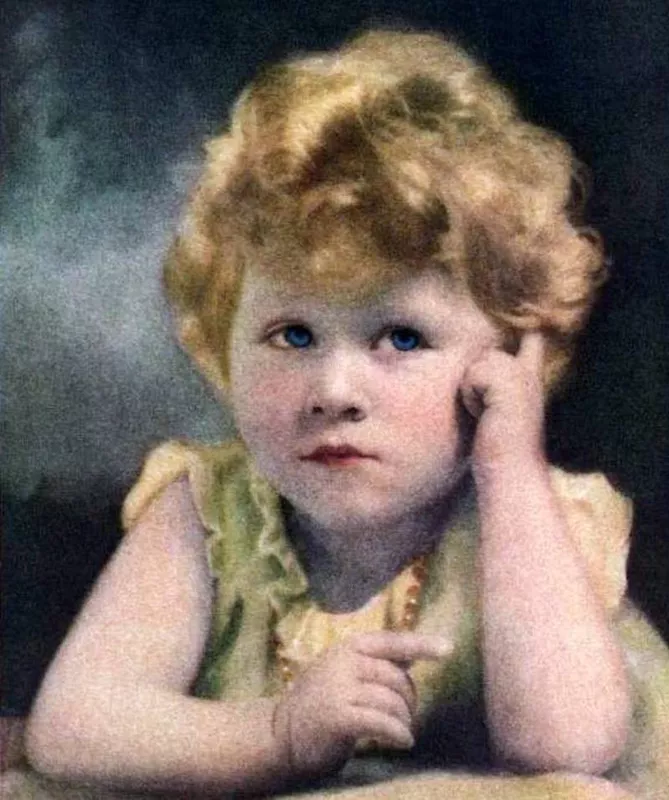
“Princess Lilibet.” Derivative image from a 1929 Time magazine cover. Time / Wikimedia
There’s always been a fascination with royalty, and this phenomenon has a name. According to Dr. Frank Farley, a professor and psychologist at Temple University and a former American Psychological Association president, it’s called “parasocial behavior” and happens when people get attached to a person without meeting them or having any meaningful connection.
“We’re social animals,” Dr. Farley told Time magazine in 2018. “With famous media figures, people we learn about, celebrities, et cetera, we often live some of our lives through them … We all have dreams of wealth and fame and happiness and style and social influence and so on, which starts early with fairy tales and the way we raise our kids. That stays with us, to some extent, through our lives. Royals and other people, like Hollywood figures … keep that phenomenon alive.”
Elizabeth was a public figure since birth. She appeared on her first Time magazine cover at the age of 3. She didn’t have a choice. Fame chose her.
Some Family and Friends Called Her ‘Lilibet.’ One Person Called Her ‘Cabbage.’
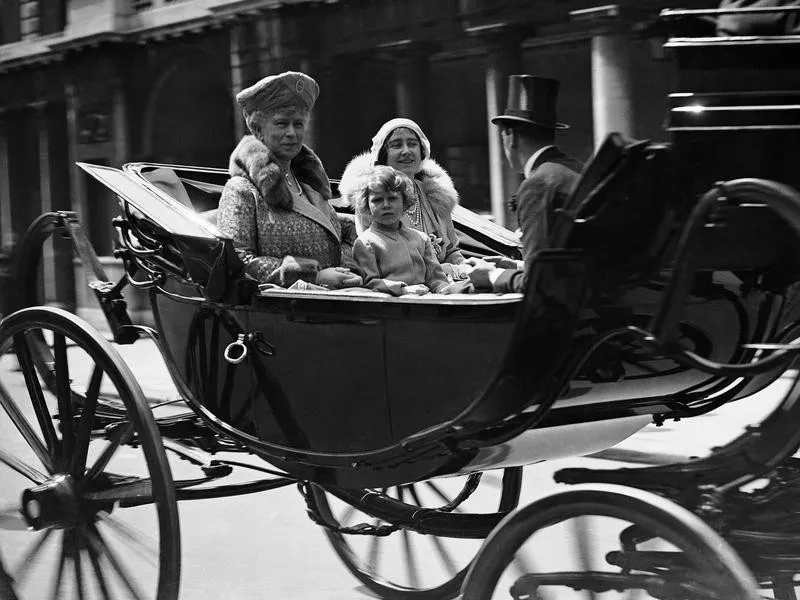
Britain’s Queen Mary, left, with Princess Elizabeth and Lady Elizabeth Bowes Lyon, the Duchess of York, right, returning to Buckingham Palace in London after the Trooping of the Color ceremony in 1931. Len Puttnam / AP Photo
Learning how to speak can be difficult with longer names, and Elizabeth was a mouthful. The young princess couldn’t quite pronounce it. That’s how she gave herself her first nickname, “Tillabet.”
As she got older, “Tillabet” became “Lilibet,” which close family and friends still called her. Her late husband, Prince Philip, even had his own pet name for his wife, “Cabbage.”
She also went by “Granny,” “Gan Gan,” “Gary” and “Shirley Temple.” If you ever met the queen, though, you would have addressed her as “Your Majesty.”
This Castle Was One of Her Favorite Places
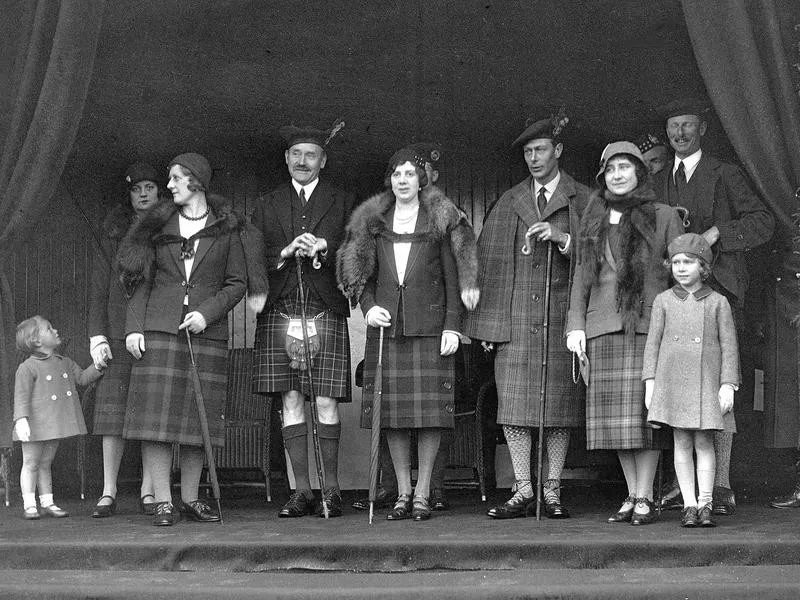
Princess Elizabeth, front right, stands next to her mother and father, the Duke and Duchess of York, second and third from right, at the Braemar Highland Gathering in 1932. AP Photo
Little girls just want to have fun. And what’s more fun than the Braemar Gathering, the most famous highland games in the world?
We’re talking about running, dancing and impressive feats of strength. It’s a big sporting competition/party that takes place in Aberdeenshire, Scotland, a short distance from the royals’ summer residence at Balmoral Castle, the Queen’s favorite residence.
“I think Granny is the most happy there,” said Princess Eugenie in the documentary “Our Queen at Ninety,” Town & Country reported. “I think she really, really loves the Highlands.”
Princess Elizabeth started going to Balmoral when she was young and always enjoyed relaxing and spending quality time with family.
“Walks, picnics, dogs — a lot of dogs, there’s always dogs — and people coming in and out all the time,” Eugenie continued. “It’s a lovely base for Granny and Grandpa, for us to come and see them up there, where you just have room to breathe and run.”
She Made Her Parents Proud
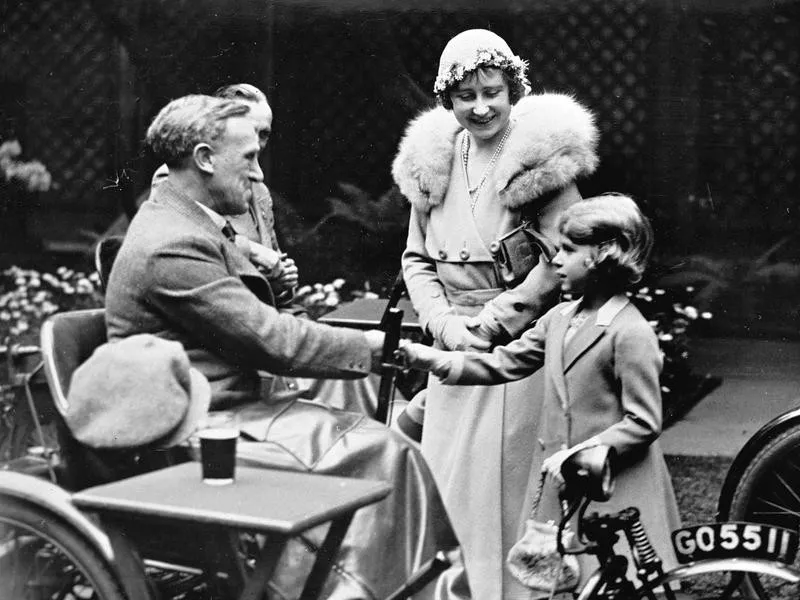
Princess Elizabeth with her mother, the Duchess of York, and a disabled soldier in 1933. AP Photo
Look closely at many photos of the young Princess Elizabeth with her parents, and you can see them bursting with pride.
Even though they planned life out of the spotlight for her, wherever they took her when she was young, she had a special ability to connect with people of all ages.
In 1933, her mother, the Duchess of York, introduced her to disabled soldiers at an exhibition of their work. The meeting was a foreshadowing of Elizabeth’s service to come during World War II.
She Was Always an Old Soul With Empathy
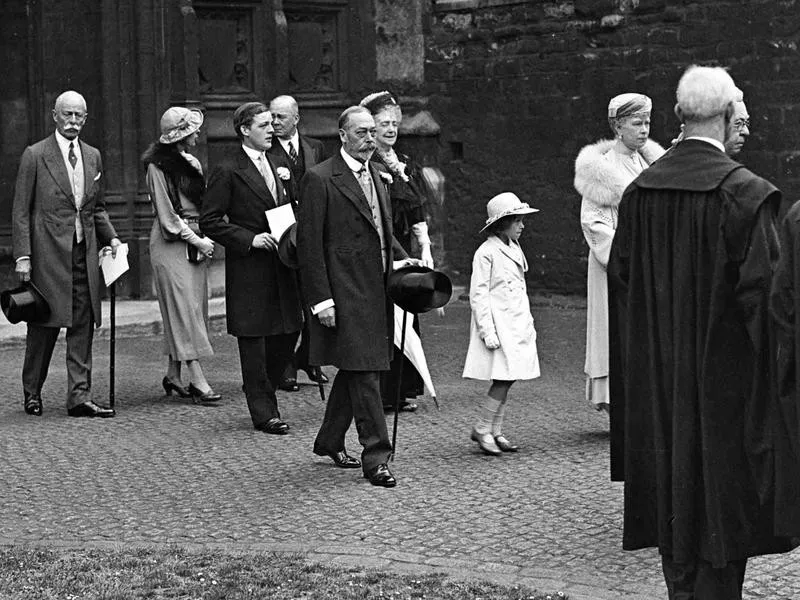
Power walkers. Len Puttnam / AP Photo
Can you spot the difference in this picture? Hint: One of these people outlasted 13 British prime ministers and 13 U.S. presidents during her time as Britain’s head of state.
Of course, it’s Princess Elizabeth as an 8-year-old in 1934. Often, she was the youngest in a group. These experiences gave her exposure to grown-up issues, even if she wasn’t fully grown herself, and helped her develop a worldview with a sense of compassion and empathy for all.
Here, she walks between King George V and Queen Mary as they leave Westminster Abbey in London after attending a service for the Relief of the Unemployed. During the Great Depression in 1931, her Uncle Edward organized a relief fund for Britain’s many unemployed, and an all-party government was formed on the advice of her grandfather, George V.
The Queen Was Homeschooled in a Nontraditional Way
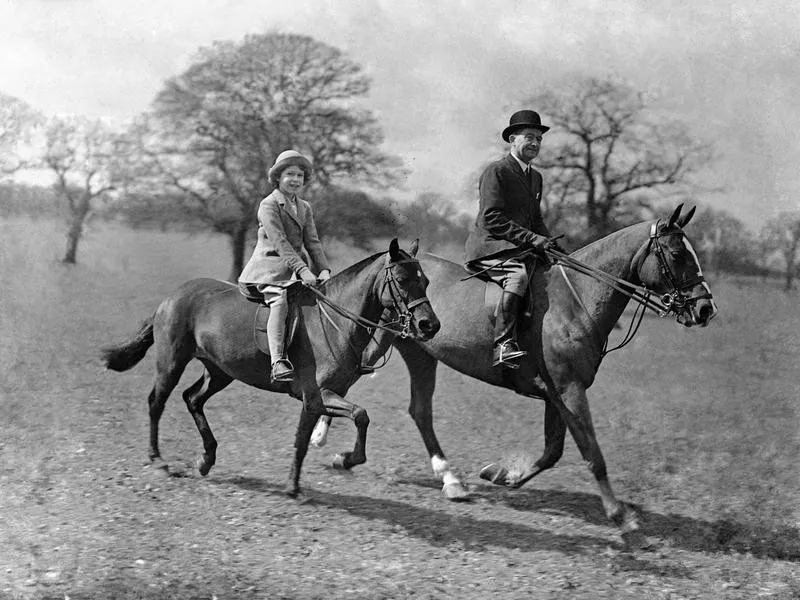
Princess Elizabeth riding with the riding master in Windsor in 1935. AP Photo
Queen Elizabeth did not have a traditional education. Instead of attending a formal school (public or private), the princess and her sister, Princess Margaret Rose (who was five years younger than Elizabeth), were educated at home by their governess Marion Crawford.
After their father became king in 1936, Elizabeth had private instruction with some prominent teachers from Eton College and Cambridge, studying constitutional history and law. She also took horse riding lessons, and that may have been her favorite subject.
“The queen is certainly cultured, even if not that moved by the arts,” said royal biographer Penny Junor.
She Passed on Her Love of Horses to Other Family Members
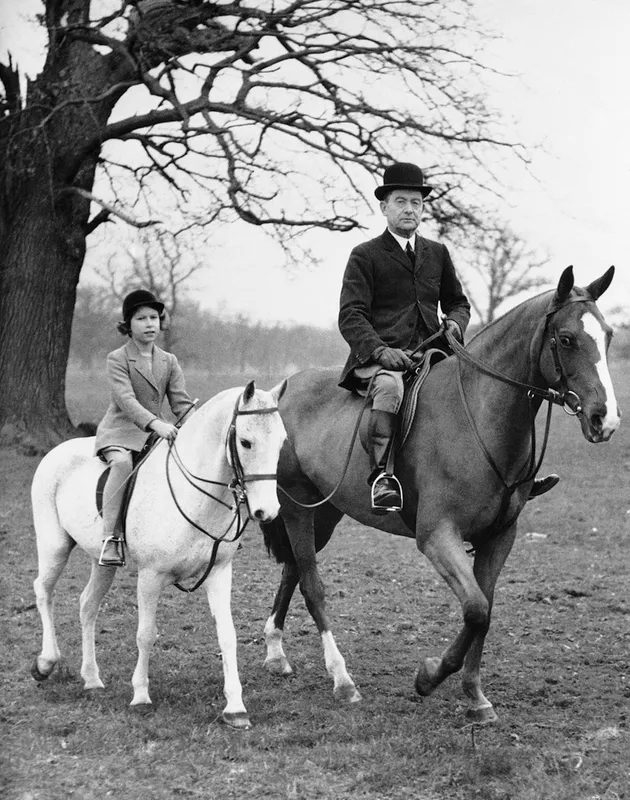
Princess Elizabeth celebrates her 10th birthday in 1936 by riding her new white pony in Windsor Great Park with her riding master. AP Photo
Elizabeth started riding horses when she was 3 years old, and she never stopped. At age 4, Elizabeth was given her first horse, a Shetland pony named Peggy, which she was riding by the age of 6.
By 18, she was an accomplished rider and continued to ride for pleasure throughout her life. In 2019, Queen Elizabeth was riding a horse on the grounds of Windsor Castle at the age of 93. She did the same a year later at age 94.
According to Town & Country, the queen also passed on her equestrian passion to her daughter, Princess Anne, who inspired her daughter, Zara Tindall, to get into the sport. Tindall then went on to win a silver medal at the 2012 Olympic Games in London as a member of the United Kingdom’s eventing team.
Corgis Are Her Favorite Dog
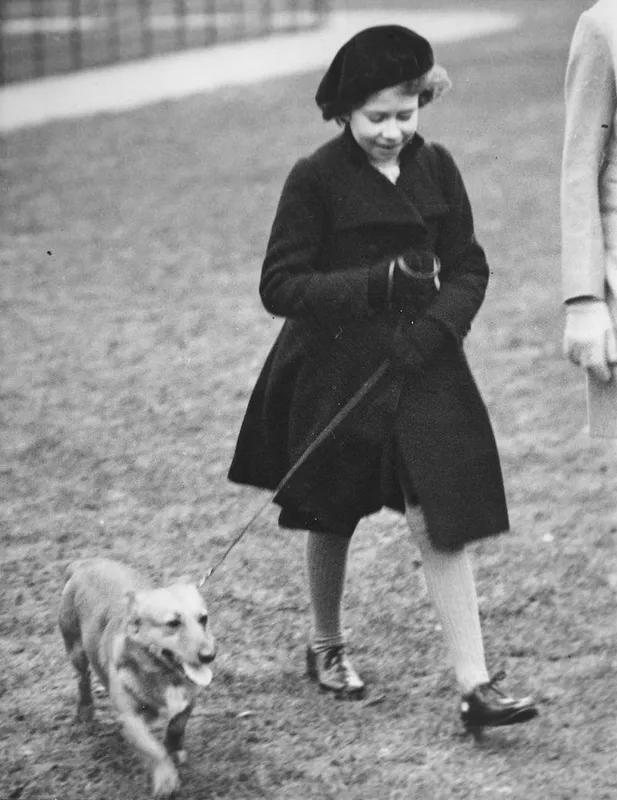
Princess Elizabeth takes her pet dog for a walk in Hyde Park, London, in 1936. AP Photo
The queen’s father bought her first corgi in 1933 when she was 7, and he was still the Duke of York. She and her sister named the puppy Dookie. They soon got a second corgi named Jane.
Elizabeth was hooked and became a corgi fanatic. For more than eight decades, she has owned purebred corgis. In the 1980s, she collected packs of up to 13 corgis at a time and bred most of them at Windsor Castle.
According to The Dodo, people who love corgis “are very social creatures. They tend to be extroverts and love getting attention from others. Corgi lovers love to talk and will probably not stop talking very often. They tend to be the ones who crave the spotlight — maybe actors and musicians! They’re very active and love going out and experiencing the world. Corgi people are quirky, but can also be kind of stubborn — they believe what they believe!”
Some of Queen Elizabeth’s other dogs were named Carol, Crackers, Monty, Candy, Vulcan and more. She loved corgis so much that she even took one on her honeymoon. Now, that’s true love. And a conscientious pet owner.
She Was Close With Her Sister Until They Took Different Paths
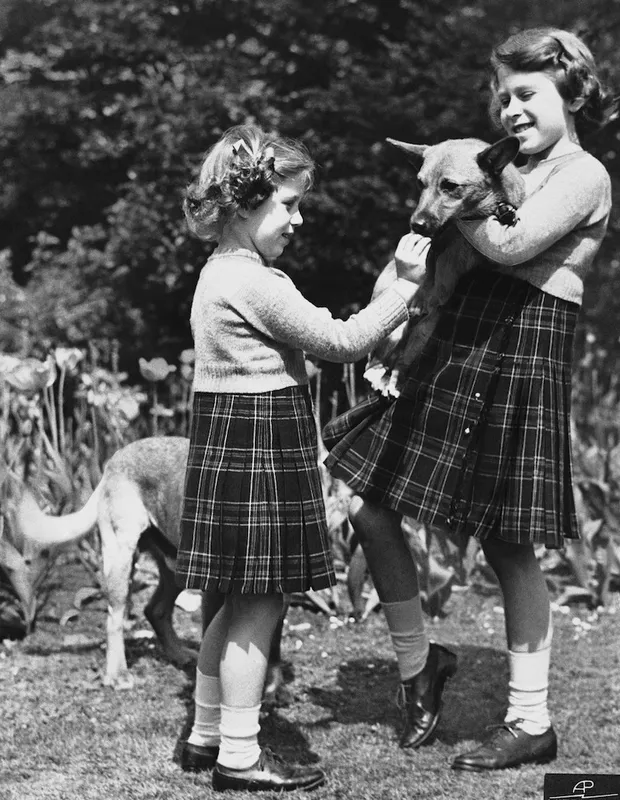
Princess Elizabeth, right, holds the family corgi in her arms while Princess Margaret feeds him a biscuit in 1936. AP Photo
Elizabeth got along well with Margaret, her only sibling, but once Elizabeth became a direct heir to the throne, she got more unique opportunities, such as education. A former member of the royal staff, Anne Clenconner, explained their divergent paths in a 2018 documentary called “Margaret: The Rebel Princess,” Harper’s Bazaar reported.
“[Margaret] said to me, ‘That was the first time I sort of thought or realized that my sister was going to be Queen, and I wouldn’t really be part of what she was going to do,'” Glenconner said. “It hit her quite hard that their lives were going to be completely different.”
Nevertheless, Margaret maintained great respect for her older sister. “She was terribly loyal to the queen — and being five years younger, I think it would have been much more difficult if she had been just [a little] younger than the queen,” Glenconner told People. “There would have been more rivalry.”
Clenconner offered more insights into the royal relationship in a 2020 memoir called “Lady in Waiting: My Extraordinary Life in the Shadow of the Crown” and shared 30 years of secrets.
With Some Youthful Playfulness, She Broke Down Traditional Royal Barriers
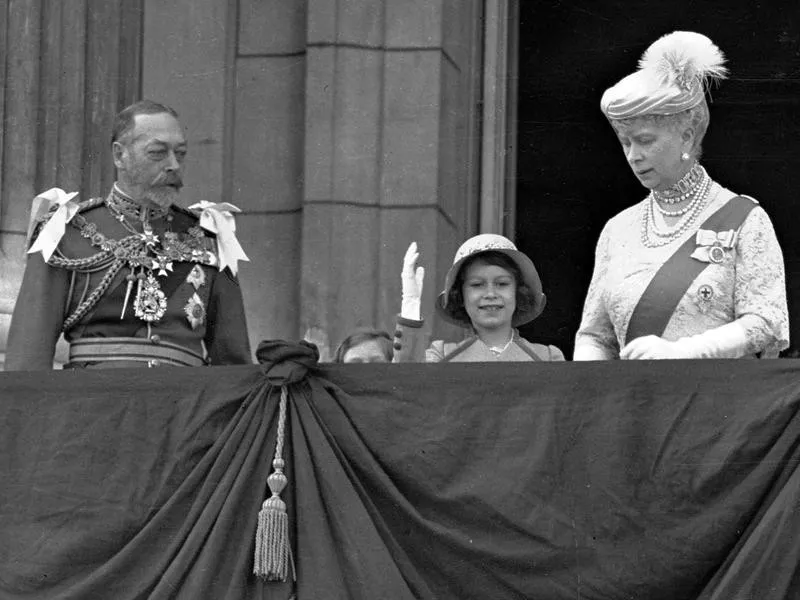
Princess Elizabeth, center, waves from the balcony of Buckingham Palace with her grandparents King George V and Queen Mary in 1935. AP Photo
The royal family has strict rules to follow. They aren’t exactly kid-friendly. But young Elizabeth brought a fun-loving spirit to the kingdom.
While her grandfather, King George V, could be an intimidating person, she was one of the few people in the country who wasn’t afraid of him. According to Time, she once surprised the archbishop of Canterbury by playfully “leading the king by the beard as if he were a horse.”
She was 9 when King George died in 1936 at the age of 70. The loss saddened her. But being around the king so much prepared her well.
England Wanted Her to Be Queen
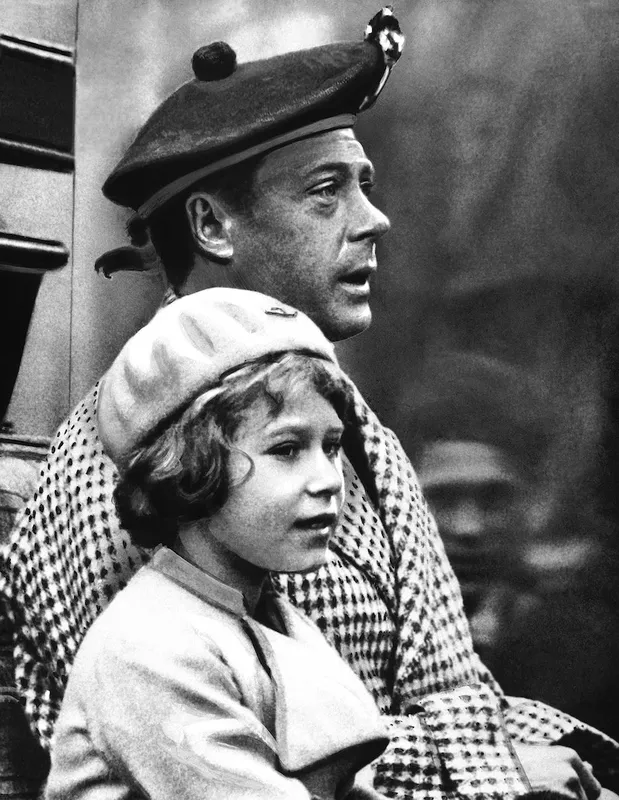
Princess Elizabeth with her uncle, Prince Edward, during a visit to Balmoral, Scotland, in 1933. AP Photo
Elizabeth’s uncle, Edward, ascended to the throne after the death of King George V. Edward had been romancing an American divorcee, Wallis Simpson, for a few years, so people in the United States got excited about the possibility of an American queen.
But kings are not allowed to marry divorced women, and old England had its heart set on a second Queen Elizabeth. The daughter of George and Elizabeth, the Duke and Duchess of York, would become Crown Princess if King Edward abdicated to marry. And that’s exactly what happened.
He abdicated the throne in order to marry Simpson and took the title Duke of Windsor. Elizabeth’s father became king, and she became the next in line in the monarchy.
All Hail Her Dad
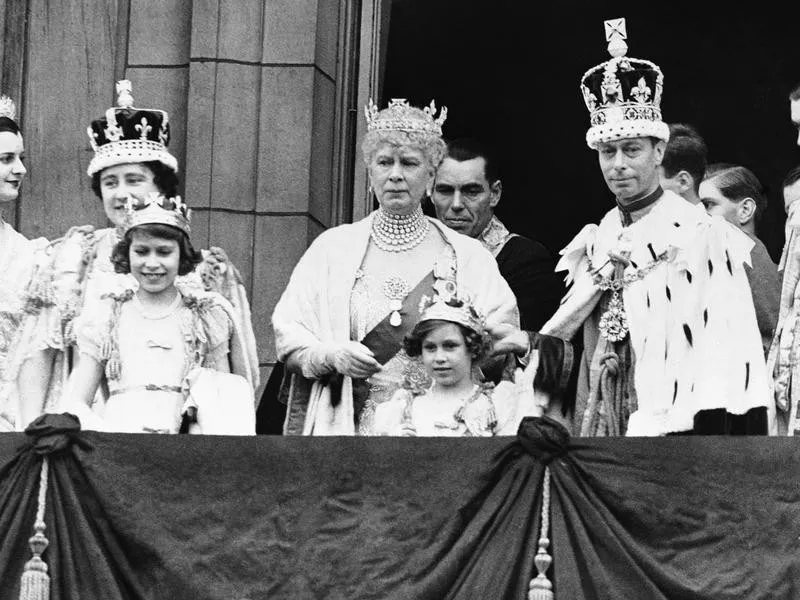
Princess Elizabeth celebrates her dad becoming king in 1937 with her family at Buckingham Palace. AP Photo
The coronation of Princess Elizabeth’s father, George VI, and his wife Elizabeth, her mother, as king and queen of the United Kingdom and the British Commonwealth took place at Westminster Abbey in London, on May 12, 1937.
The family’s new home was Buckingham Palace, the London residence and administrative headquarters of the monarchy. It has been the official royal residence since 1837 and is famous for hosting state and royal events.
When the young Elizabeth learned they were moving to Buckingham Palace, she asked her nanny: “What, you mean forever?”
She Liked to Plan Parties, and She Got Nice Presents
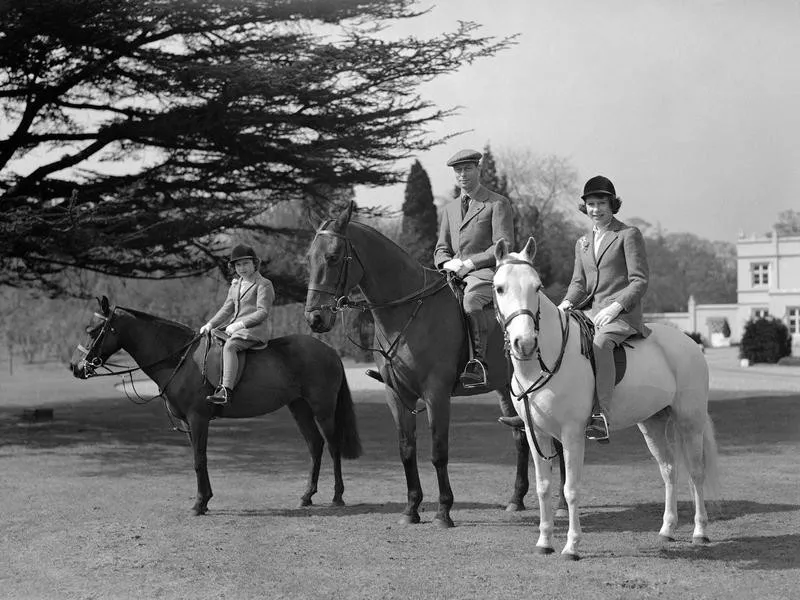
Princess Elizabeth, right, with King George VI and Princess Margaret Rose after their ride in Windsor Great Park in 1939. AP Photo
The eldest daughter of King George VI and Queen Elizabeth celebrated her 13th birthday on April 21, 1939. And Princess Elizabeth was allowed to plan her own day.
After opening her presents in the morning, she went riding in Windsor Great Park with the king and Princess Margaret. Elizabeth then gave a tea party at Windsor Castle. The king, queen and others close to the royal family were invited.
The princess’ birthday presents included a diamond bracelet from the king and clothes, among which were silk stockings from the queen.
Princess Elizabeth Fell in Love With Her Future Husband When She Was 13
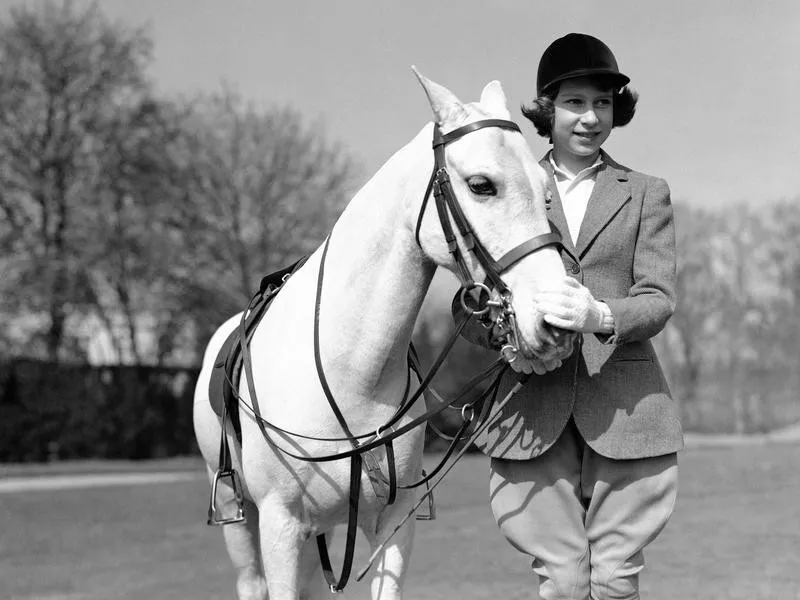
Princess Elizabeth after a ride in 1939. AP Photo
It wasn’t love at first sight, but it didn’t take long for Princess Elizabeth to fall for Prince Philip, her future husband.
The distant cousins met for the first time in 1934 at a wedding when Elizabeth was 8 and Philip was 13. Three years later, Philip was at the coronation of Elizabeth’s father, George VI. But their first official meeting was in 1939 when King George VI brought his family to the Royal Naval College in Dartmouth, Devon.
She was 13 and he was 18, tasked with entertaining her and her sister Margaret. After playing with some train sets, he took them to the tennis courts and impressed Elizabeth by jumping over tennis nets.
“I thought he showed off a good deal,” recalled Marion Crawford, Elizabeth’s governess, recalled. “She never took her eyes off him the whole time.”
Elizabeth and Philip exchanged letters after that, and they got married in 1947.
She Became a Wartime Princess During World War II
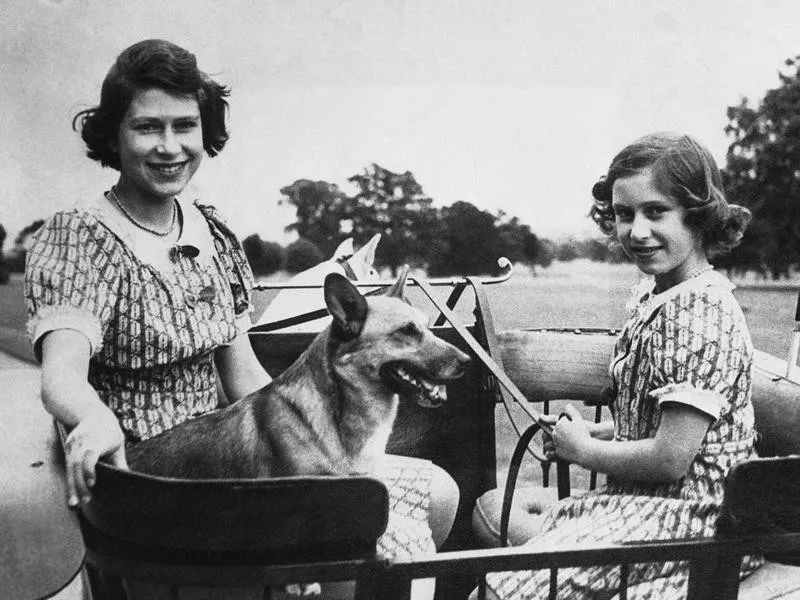
Princess Elizabeth, left, and Princess Margaret ride in a pony cart at a Windsor Castle in 1940. AP Photo
The British Empire and Commonwealth (except Ireland) declared war on Nazi Germany in September 1939, then Italy in 1940 and Japan in 1941.
World War II lasted from 1939 to 1945, and King George’s popularity soared during the conflict that involved almost every part of the world with the Allies (led by Great Britain, the United States, France, the Soviet Union and China) fighting the Axis powers (Germany, Italy and Japan). Buckingham Palace was bombed during the Blitz while the king and queen were there, and the king’s younger brother, the Duke of Kent, was killed in active service.
George became known as a symbol of British determination to win the war. Instead of moving his family out of England during the war, he and the queen stayed at Buckingham Palace, and the children stayed at Windsor Castle, a country residence in Berkshire, about 20 miles from the palace.
The princesses, Elizabeth and Margaret, did not leave England as other English children did because the king wanted his family to share the hardships and perils of the common people. This decision shaped her entire life and worldview.
And Thus Began a Lifetime of Leadership
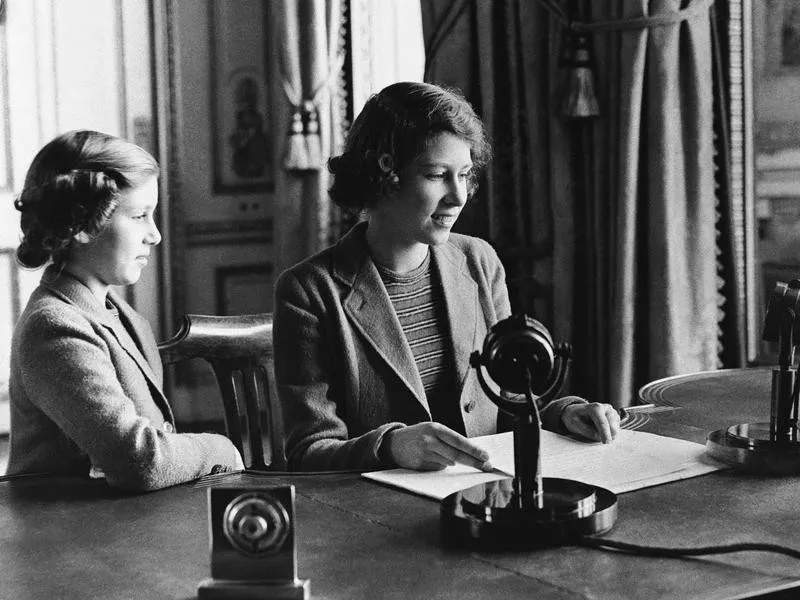
Princess Elizabeth was called on to perform many public duties for the royal house as she grew older. On Oct. 13, 1940, the 14-year-old made her broadcasting debut during World War II on the “Children’s Hour,” a BBC radio program.
She spoke to the nation of England, giving a three-minute speech to the British girls and boys who were evacuated overseas to find new wartime homes in Canada, Australia, New Zealand, South Africa and the United States.
“[W]e children at home are full of cheerfulness and courage,” Elizabeth told the listening audience. “We are trying to do all we can to help our gallant sailors, soldiers and airmen, and we are trying, too, to bear our own share of the danger and sadness of war. We know, every one of us, that in the end, all will be well, for God will care for us and give us victory and peace. And when peace comes, remember it will be for us, the children of today, to make the world of tomorrow a better and happier place.”
Her sister, Princess Margaret, joined her to say goodnight to listeners.
You can hear the full speech here.
She Secretly Celebrated VE Day on the Streets of London
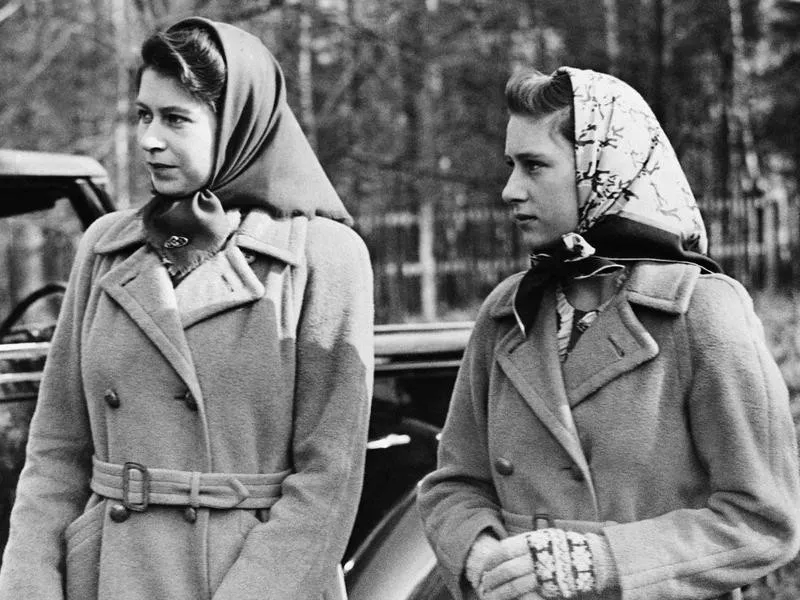
Princess Elizabeth, left, and Princess Margaret in 1945. AP Photo
World War II officially ended on May 8, 1945, or Victory in Europe (VE) Day, as the Allies accepted the unconditional surrender of the Nazis. The king broadcasted the news to the nation, and the royal family made eight appearances on the balcony of Buckingham Palace to acknowledge the cheering crowds.
Princesses Elizabeth and Margaret got permission from their parents to leave the palace and party incognito in the streets of London. “I remember lines of unknown people linking arms and walking down Whitehall, all of us just swept along on a tide of happiness and relief,” she recalled in 1985, according to the BBC.
Their wild evening was dramatized in a 2015 film called “A Royal Night Out,” with Sarah Gadon playing Elizabeth and Bel Powley playing Margaret.
Her Faith Was a Guiding Principle
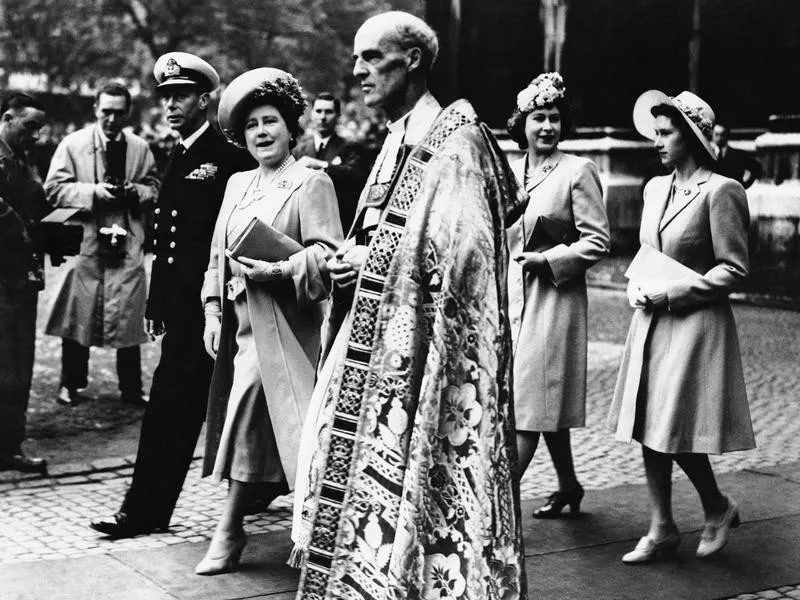
Princess Elizabeth, rear left, with King George VI, Queen Elizabeth and Princess Margaret Rose are escorted from Westminster Abbey by the Rev. Alan Campbell Don in 1946. AP Photo
Princess Elizabeth grew up Anglican as part of the world’s most famous Church of England family. After becoming queen in 1952, she also inherited the title of defender of the faith, a role every monarch has had since Henry VIII broke with the Catholic Church in 1534.
Her faith in Christianity was a guiding principle in her life, and it grew over the years. “Let us set out to build a truer knowledge of ourselves and our fellowmen, to work for tolerance and understanding among the nations and to use the tremendous forces of science and learning for the betterment of man’s lot upon this Earth,” she said in her first Christmas message as queen in 1952.
In the 21st century, she has spoken more openly about Christianity. A senior member of the Vatican even called her “the last Christian monarch.” Now, faith is her message. “I know just how much I rely on my faith to guide me through the good times and the bad,” she said in her Christmas message in 2002. “Each day is a new beginning. I know that the only way to live my life is to try to do what is right, to take the long view, to give of my best in all that the day brings, and to put my trust in God … I draw strength from the message of hope in the Christian Gospel.”
In 2016 she said, “Billions of people now follow Christ’s teaching and find in him the guiding light for their lives. I am one of them because Christ’s example helps me see the value of doing small things with great love, whoever does them and whatever they themselves believe.”
On Her 21st Birthday, She Dedicated Her Life to Service
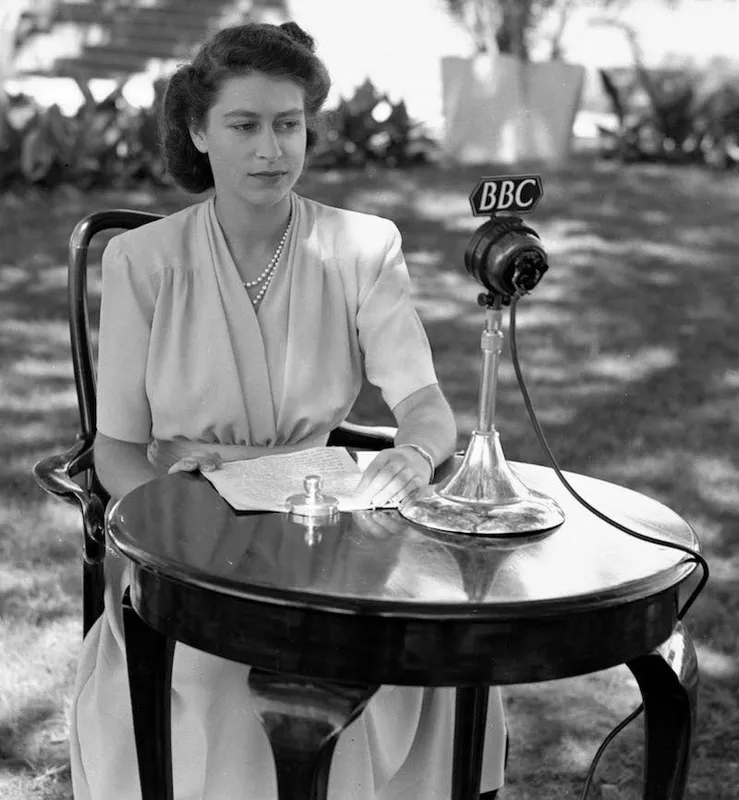
Princess Elizabeth delivers her 21st birthday speech from Cape Town, South Africa, in 1947. Eddie Worth / AP Photo
Princess Elizabeth turned 21 in 1947 and was with her parents and younger sister on a tour of South Africa. In a speech broadcast on the radio from Cape Town, the princess dedicated her life to the service of the Commonwealth.
“I declare before you all that my whole life whether it be long or short shall be devoted to your service and the service of our great imperial family to which we all belong,” she said. “But I shall not have strength to carry out this resolution alone unless you join in it with me, as I now invite you to do: I know that your support will be unfailingly given. God help me to make good my vow, and God bless all of you who are willing to share in it.”
You can hear her whole speech here.
She Mastered Balancing Work With Play
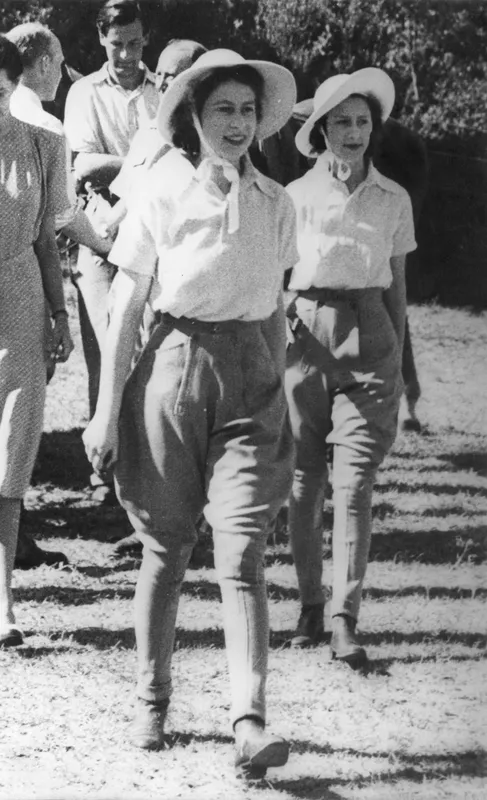
Princess Elizabeth with her sister, Princess Margaret, in East London, South Africa in 1947. Eddie Worth / AP Photo
Being in the royal family can be tougher than it looks. When you are the heir to the throne, the scrutiny is magnified, and there is a lot of pressure to live up to the title.
Elizabeth made it look easy her whole life. Her family trip to Africa in 1947 may have been the moment when everything clicked, and she figured out the art of balancing royal life. She gave a BBC radio address to her nation, made her first public appearance alone at an event in a foreign land, watched wild big game at Kruger National Park and rode horses on the beach in East London, South Africa.
She did everything with a purpose and calm that was a beacon of light.
She Got Married
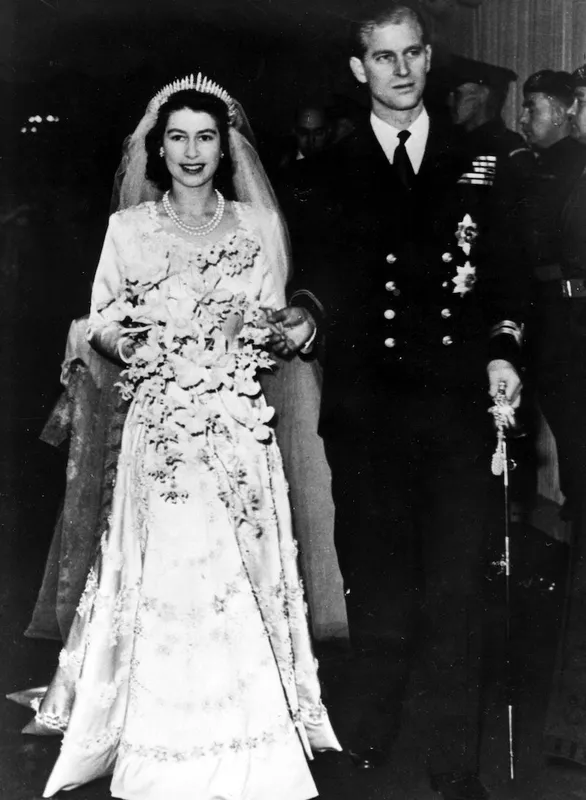
Princess Elizabeth and Prince Philip leave Westminster Abbey after their wedding ceremony in 1947. AP Photo
The big wedding day arrived for the princess. On Nov. 20, 1947, Elizabeth married Philip Mountbatten, the Duke of Edinburgh and a former Greek and Danish prince, at Westminster Abbey in London.
The couple was secretly engaged in 1946 after Philip asked King George VI for his daughter’s hand in marriage. The king agreed with one request to delay any formal engagement until she turned 21, so the official engagement was announced July 9, 1947.
They were been married for 74 years before Prince Phillip passed away on April 9, 2021.
Say Hello to Queen Elizabeth II
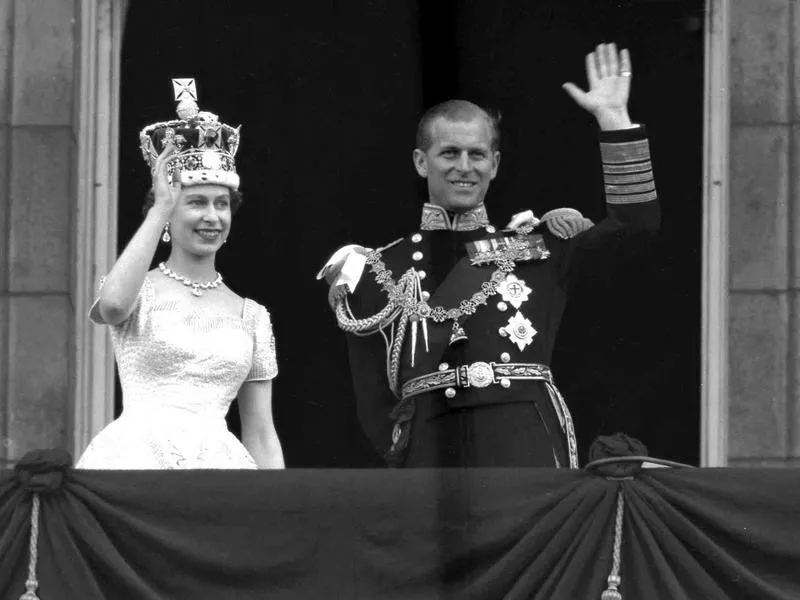
Queen Elizabeth II and Prince Philip wave to supporters from the balcony at Buckingham Palace following her coronation in 1953. Leslie Priest / AP Photo
Princess Elizabeth became the queen of England on Feb. 6, 1952, after her father died of coronary thrombosis at the age of 56.
Her coronation took place on June 2, 1953, at Westminster Abbey and was the first British coronation to be fully televised. It was watched by 27 million people in the U.K. alone and millions more around the world.
It was estimated to have cost £1.57 million, or $1.9 million (c. £43,427,400, or $54.2 million, in 2019).